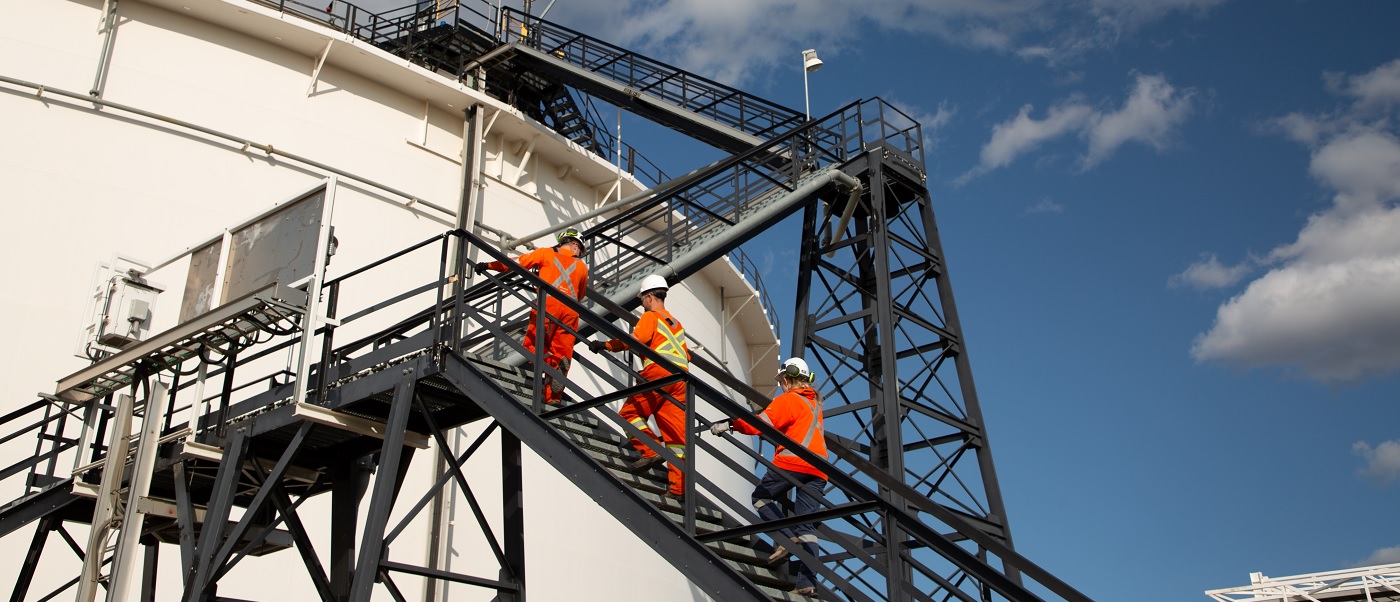Quick-to-market initiatives support sustained crude demand in North America and abroad
Whether it’s through open seasons or open water, Enbridge is meeting sustained market demand with phased growth on our North American liquids pipeline network.
“It was a strong start to the year” for Enbridge’s liquids super system, noted President and CEO Greg Ebel during our 2025 first-quarter financial earnings call on May 9.
“Our Mainline delivered record first-quarter volumes of almost 3.2 million barrels per day,” he remarked, adding that the Enbridge Ingleside Energy Center (EIEC) export terminal near Corpus Christi, TX “recorded another quarterly volume record, benefiting from increased operational capacity.”
Global oil demand and market fundamentals, for both Canadian heavy oil and Permian light oil, support Enbridge’s growth and expansion plans across our liquids network—which is the longest and most complex on the continent.
“Simply put . . . there is no peak in oil demand on the horizon. The fact that oil demand keeps rising, hitting new records, year on year, is a clear example of what I’m saying,” Haitham Al Ghais, secretary general of the Organization of Petroleum Exporting Countries (OPEC), told an audience at the 2025 Global Energy Show on June 9 in Calgary.
“Meeting this ever-rising demand will only be possible with adequate and timely and necessary investments in the oil industry.”
At Enbridge, we’re executing our growth and expansion plans through a series of incremental and quick-to-market initiatives:
- About 300,000 barrels per day of visible expansion capacity, in two phases, on our Mainline system, an approximately 3,125-mile (5,030-km) series of pipes that moves oil from Alberta to the U.S. Midwest and Eastern Canada.
- Ongoing expansion of our Permian system and our Ingleside export terminal, which includes the acquisition of two additional export docks.
Flanagan South open season kicks off Mainline Optimization
Enbridge moves about 30% of the oil produced in North America—and, thanks to our Mainline and Express-Platte systems, we’re connected to about 75% of the continent’s refining capacity, including hubs in the U.S. Upper Midwest and Gulf Coast.
The Mainline was in apportionment (i.e. full and oversubscribed) for the entire first quarter, “illustrating its critical role in the transportation of oil to key demand centers,” noted Mr. Ebel.
Accordingly, we have almost 200,000 bpd of near-term, quick-to-market expansions that we are currently evaluating:
Marine docks, additional storage and Gray Oak expansion in Texas
On the export front, we’ve been busy expanding our footprint at Ingleside and capacity on Gray Oak, one of Ingleside’s primary feeder pipelines for Permian light:
- In November 2024, we closed our acquisition of two additional marine docks and land adjacent to Ingleside from Flint Hills Resources, making Q1 the first full quarter of expanded export capacity and supporting those record volumes.
- We’re on pace to add an extra 2.5 million barrels of storage at Ingleside in late 2025 through our Phase 7 Tank Expansion Project—bringing our storage capacity to 20.1 million barrels by year’s end (up from 15.3 million in 2021).
- We recently completed the first phase of Gray Oak expansion. The capacity of this long-haul, 850-mile pipeline is currently 980,000 barrels a day from the Permian to Corpus Christi, and we’ll be placing the second phase of that expansion into service in 2026.
“The Permian is a great basin and always will be. It’s a critical basin,” said Colin Gruending, Executive Vice President and President of our Liquids Pipelines business, during our 2025 Q1 earnings call. “We’ve built the business intentionally to be resilient.”
Supporting production growth in Alberta
Meanwhile, “the growth outlook in the economically advantaged Western Canadian Sedimentary Basin (WCSB) remains strong, with approximately 1 million incremental barrels per day expected to come onstream by 2035,” said Mr. Ebel.
Enbridge’s Regional Oil Sands system, anchored by three long-haul pipelines, provides market access for Canada’s oil sands producers, moving about 2.5 million bpd.
To support WCSB development:
“We look forward to working with our customers, the Government of Alberta, and other stakeholders to support future phased growth,” said Mr. Ebel.















